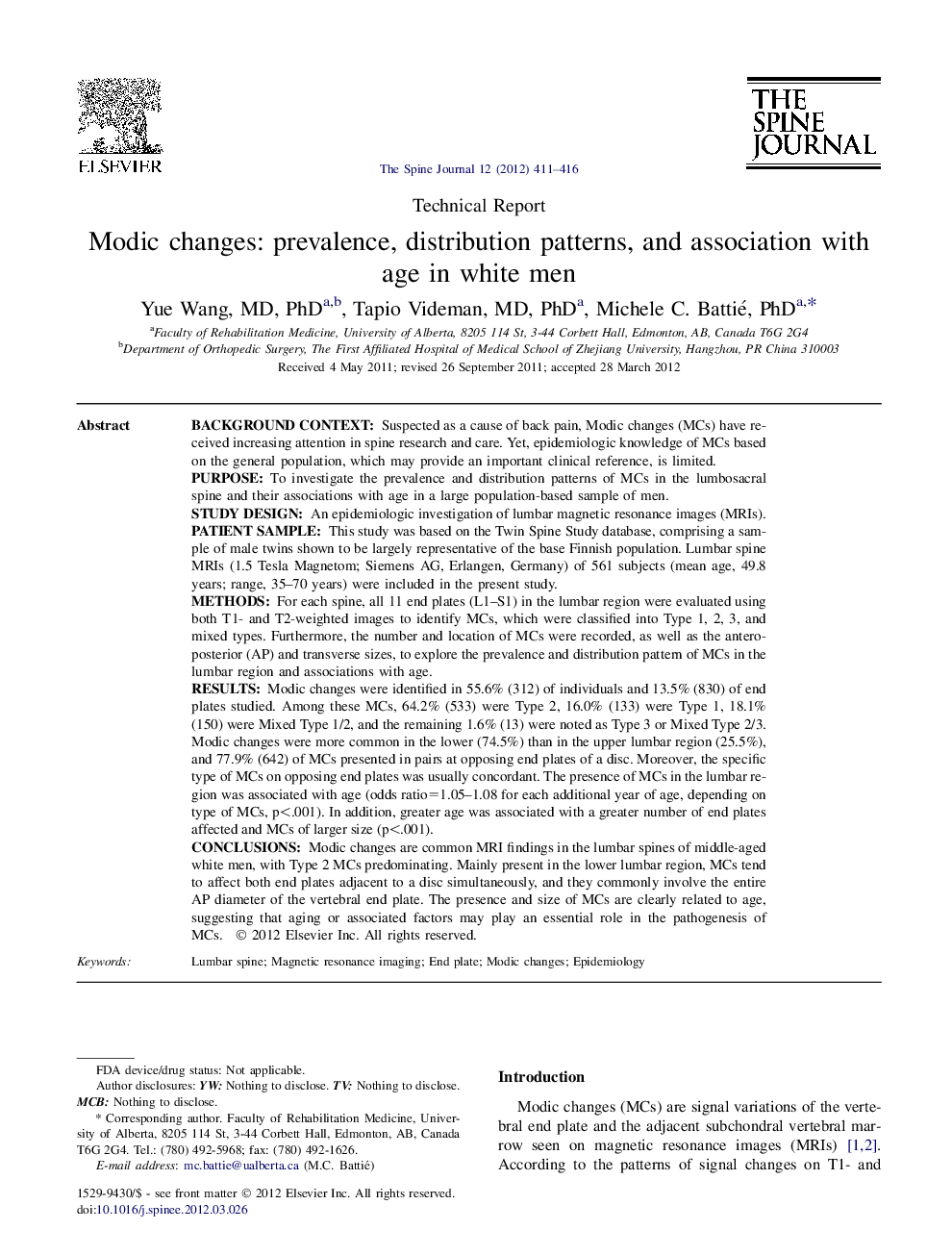| Article ID | Journal | Published Year | Pages | File Type |
|---|---|---|---|---|
| 4098448 | The Spine Journal | 2012 | 6 Pages |
Background contextSuspected as a cause of back pain, Modic changes (MCs) have received increasing attention in spine research and care. Yet, epidemiologic knowledge of MCs based on the general population, which may provide an important clinical reference, is limited.PurposeTo investigate the prevalence and distribution patterns of MCs in the lumbosacral spine and their associations with age in a large population-based sample of men.Study designAn epidemiologic investigation of lumbar magnetic resonance images (MRIs).Patient sampleThis study was based on the Twin Spine Study database, comprising a sample of male twins shown to be largely representative of the base Finnish population. Lumbar spine MRIs (1.5 Tesla Magnetom; Siemens AG, Erlangen, Germany) of 561 subjects (mean age, 49.8 years; range, 35–70 years) were included in the present study.MethodsFor each spine, all 11 end plates (L1–S1) in the lumbar region were evaluated using both T1- and T2-weighted images to identify MCs, which were classified into Type 1, 2, 3, and mixed types. Furthermore, the number and location of MCs were recorded, as well as the anteroposterior (AP) and transverse sizes, to explore the prevalence and distribution pattern of MCs in the lumbar region and associations with age.ResultsModic changes were identified in 55.6% (312) of individuals and 13.5% (830) of end plates studied. Among these MCs, 64.2% (533) were Type 2, 16.0% (133) were Type 1, 18.1% (150) were Mixed Type 1/2, and the remaining 1.6% (13) were noted as Type 3 or Mixed Type 2/3. Modic changes were more common in the lower (74.5%) than in the upper lumbar region (25.5%), and 77.9% (642) of MCs presented in pairs at opposing end plates of a disc. Moreover, the specific type of MCs on opposing end plates was usually concordant. The presence of MCs in the lumbar region was associated with age (odds ratio=1.05–1.08 for each additional year of age, depending on type of MCs, p<.001). In addition, greater age was associated with a greater number of end plates affected and MCs of larger size (p<.001).ConclusionsModic changes are common MRI findings in the lumbar spines of middle-aged white men, with Type 2 MCs predominating. Mainly present in the lower lumbar region, MCs tend to affect both end plates adjacent to a disc simultaneously, and they commonly involve the entire AP diameter of the vertebral end plate. The presence and size of MCs are clearly related to age, suggesting that aging or associated factors may play an essential role in the pathogenesis of MCs.
